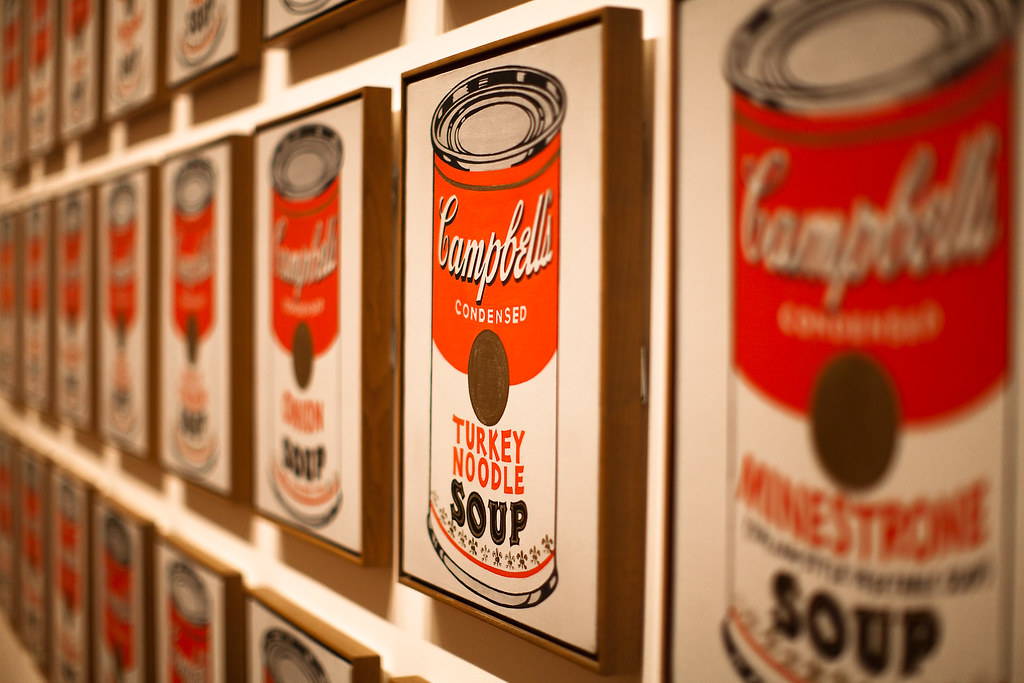6 things to know about the confusing
world of prints
Strolling through art fairs or galleries you might have noticed this one confusing category that is sold among the usual paintings and sculptures. We call them “original prints” or “fine art prints”, “multiples” and so on. Due to their often lower price point they are a popular entry-level segment for new collectors. We show you what you really need to know about them, especially if you’re thinking about purchasing a print.
1. What is a print?
A print is any work of art that has gone through a transfer process to be made in multiple replications. Defined by the Print Council of America a “fine art” or “original” print is an image drawn, engraved or etched on a surface by the artist who then prints a limited edition by hand (or oversees the printing process) and then signs and numbers the singular pieces. A fine art print is always a reproduction of some sort but it is more than merely a copy of an original. Fine art prints are produced in close cooperation with the artist who is oftentimes directly involved in the printing process. The printers are as well highly skilled technicians and sometimes even artists themselves.
There are galleries and art fairs who refuse to sell any reproductions of original works, however often artists are dependant on selling fine art prints to sell to a broader audience and a lot of times they are their basis for making a living as an artist.
There are various different types of prints - we explain three of the most popular techniques: lithography, etching and screenprint.
Lithography:
The Potato Eaters - Lithography by Vincent van Gogh
Lithography was invented in 1796 by German author and actor Alois Senefelder as a cost-effective method of publishing theatrical works. For a lithography the artist draws onto stone using a grease-based medium, for example “tusche” a certain form of ink. A chemical solution is then applied to the stone so that it draws the printing ink. Blank areas in contrast repel the ink. Through usage of a solvent the image is “fixed” and the surface is moistened with water. Then, oil-based ink is dabbed on the stone, only sticking to the image. In a last step a lithographic press is used to evenly apply pressure onto the image. For complex images multiple stones are used and printed in reverse.
Etching:
To create an etching the artist uses a special etching needle with which he scratches an image onto a metal plate smeared in wax. In a next step the plate is plunged in acid, which changes the surfaces of the metal that is exposed by the scratching. Through cleaning and inking the plate multiple times, only the incised lines are left filled with ink. Finally the plate is covered with wetted paper to be placed in an etching press. Due to the pressure the paper is forced into the etched lines picking up the ink and thus making a print. This type of printing has often been combined with other techniques such as engraving used by Rembrandt or aquatint exercised by Francisco Goya.
Screenprint:
Firstly a stencil is created by cutting an image into a sheet of paper. This stencil is then fixed in a frame that is vested with a seam of fine mesh - the “screen”. While ink is pressed through a stencil from above, a sheet of paper is put below the screen. A print is left as only the cut-out parts of the stencil are permeable. The screen can also be used with light-sensitive gelatins instead of a stencil to reproduce a photographic image. This was a very important and new technique for artists of the Pop movement, such as Andy Warhol as they could easily reproduce images of popular culture like commercials.
Andy Warhol's Campbell Soup Cans at the MOMA
2. What should I look for when collecting prints?
When collecting fine art prints you should always pay close attention to the edition number. The higher the edition number, the lower the value of the individual print. However, if you are starting with a limited budget seek unique prints or prints with a low edition number by emerging artists or prints by established artists with a high edition number. Both are quite affordable and have the right value ratio. If you’re a more advanced collector, the more established the artist and the lower the edition number, the higher the value of the individual print. Be cautious also as especially in the emerging art scene often mere reproductions, thus posters, are sold as “prints”. These can look quite nicely, especially with a good-quality frame, however in the fewest cases they possess any kind of possibility for value appreciation over time.
3. Don’t buy posters and be careful with prints
You might have heard the advice to start your art collection with prints or even posters. This isn’t completely wrong, however there are several things you should consider when buying prints. Firstly, you should have a close look at the edition number - if a print has been published in a large edition, the individual print has less value than a print with a low edition number. However, keeping your limited budget in mind, a tip would be to go for unique prints or prints with a low edition number by emerging artists or prints by established artists with a high edition number. Both are quite affordable and have the right value ratio. Be careful though with posters - there is a lot of marketing around trying to sell cheap, unlimited & unsigned posters to you as art. They aren’t! If you want to become a serious art collector, be smart and collect original art with a realistic chance of cultural & monetary value increase over time. Another small tip: Instead of buying editioned prints by emerging artists you could also go for drawings. Often, artists use a drawing in preparation of a large piece of work which means that when buying a drawing you’re also acquiring an important milestone on the artist’s way to finishing a major artwork. Plus: drawings are usually very affordable and directly created by the hand of the artist!
3.1. Originals, editions, multiples and posters - what’s the difference?
An original or fine art print is usually a unique work produced in a limited number, called the “edition”. Usually, each print is signed with its edition number written as a fraction - for example 12/20. “20” here indicated the number of the whole edition while “12” is the print’s number. Editioned prints are thus also called “multiples”. Further an artist can create a limited number of artist’s proofs, mostly designated as “A/P” that are equivalent to the standard edition. During the printing process more proofs, such as unique colour proofs can be produced. Andy Warhol’s trial proofs for example are now some of the most sought after within his market. A poster on the contrary has nothing to do with an authentic, original print - it is merely a cheap & unsigned reproduction of an image and the artist isn’t involved in the printmaking process at all.
4. How important are the different types of paper and frames?
Not only the techniques are important in print-making but also the quality of the paper. The thickness and graininess can have a huge influence on the look of the print. Usually, the heavier the paper, the better the image quality. Some artists do however prefer cheaper paper if the look of the fine art print is for example carrying a certain mass-directed meaning like Warhol’s Soup Can pieces.
5. Is a print without signature worth less?
Typically, original or fine art prints are signed. Some well-known masters like Picasso or Lucian Freund only initial or sign their prints with a stamp. However, when buying emerging art prints you should look for the signature to be on the safe side, especially if you don’t buy directly from the artist.
6. How should I take care of my fine art print?
We have three main tips here for you: avoid moisture as well as direct sunlight, and don’t try to squeeze or even trim the piece to fit into a frame that is too small. Give it space to breathe :) And if you have the feeling you need any more advice on buying prints or caring for them contact our art advisors!


